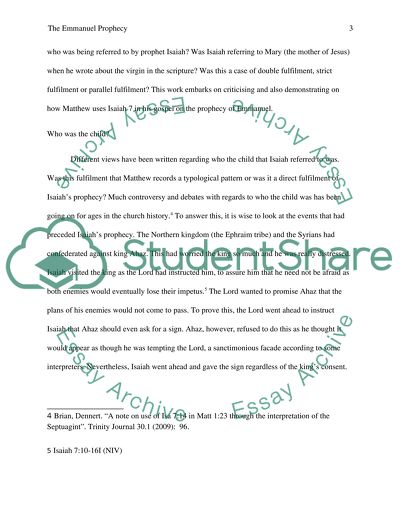Cite this document
(“The Immanuel prophecy in Isaiah 7:14-16 and its fulfillment in Matthew Term Paper”, n.d.)
The Immanuel prophecy in Isaiah 7:14-16 and its fulfillment in Matthew Term Paper. Retrieved from https://studentshare.org/religion-and-theology/1631694-the-immanuel-prophecy-in-isaiah-714-16-and-its-fulfillment-in-matthew-123
The Immanuel prophecy in Isaiah 7:14-16 and its fulfillment in Matthew Term Paper. Retrieved from https://studentshare.org/religion-and-theology/1631694-the-immanuel-prophecy-in-isaiah-714-16-and-its-fulfillment-in-matthew-123
(The Immanuel Prophecy in Isaiah 7:14-16 and Its Fulfillment in Matthew Term Paper)
The Immanuel Prophecy in Isaiah 7:14-16 and Its Fulfillment in Matthew Term Paper. https://studentshare.org/religion-and-theology/1631694-the-immanuel-prophecy-in-isaiah-714-16-and-its-fulfillment-in-matthew-123.
The Immanuel Prophecy in Isaiah 7:14-16 and Its Fulfillment in Matthew Term Paper. https://studentshare.org/religion-and-theology/1631694-the-immanuel-prophecy-in-isaiah-714-16-and-its-fulfillment-in-matthew-123.
“The Immanuel Prophecy in Isaiah 7:14-16 and Its Fulfillment in Matthew Term Paper”, n.d. https://studentshare.org/religion-and-theology/1631694-the-immanuel-prophecy-in-isaiah-714-16-and-its-fulfillment-in-matthew-123.


